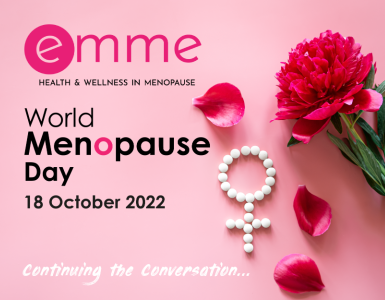Choosing to take HRT can be a minefield, especially with stories abound about the slightly increased risks of certain cancers linked with taking HRT. But another complication once we’ve decided we want to take HRT is what type.
Bioidentical HRT? Body identical HRT? Synthetic HRT? Help! What’s the difference and which one is best?
Research suggests that the safest way to take HRT is to take a combined HRT drug that contains oestrogen and progesterone to help protect against the effects of higher oestrogen, and to take both in low doses. But the chemical structure of these hormones is now known to affect the safety of HRT and therefore is worth considering. And this is where bioidentical vs body identical vs synthetic HRT stems from.
Synthetic HRT
All HRT is technically synthetic, since they’re all made in a lab. However, synthetic HRT is different to bioidentical and body identical HRT due to its chemical structure.
Each one of our hormones is chemically different in structure. This way, the body recognises each one so that it can do its job by settling into a ‘docking station’, or receptor, that switches it on. One hormone can’t fit onto the receptor of another, like a key in the wrong lock.
When the right hormone is on the right receptor, it can then influence everything from our moods to our menstrual cycle and our menopause symptoms.
Synthetic hormones used in HRT are known as conjugated oestrogens and progestins. They’re slightly chemically different to our natural hormones – they still fit onto the right receptors but their signals are slightly different meaning that their effects can be more impactful, meaning that their side-effects and risks may be also be more impactful.
Synthetic oestrogens found in HRT can be much higher in dose than the body is used to, and can cause headaches, stomach upsets, tender breasts and excessive vaginal bleeding. If not prescribed alongside protective progesterone, it may cause an increased risk of breast and womb cancers and heart disease.
When taken orally, synthetic oestrogen only HRT can increase the risk of blood clots too. This risk can be mitigated by taking it via a transdermal skin patch.
Synthetic progesterones, called progestins, can affect your mood and your skin, causing you to experience a low mood, tiredness and acne prone skin. They may also cause tender breasts, migraines and an increased risk of developing blood clots, heart disease and breast cancer.
Body identical HRT
HRT has come a long way since the only choice was synthetic HRT. As the name suggests, body identical HRT contains hormones that are still synthetically produced, but that are identical in chemical structure to that of our own hormones.
This type of HRT is considered the most ‘natural’ since the body cannot tell the difference between them and its own. Body identical HRT means that it can be taken in lower doses, minimising the risk factors associated with taking HRT.
Body identical oestrogen tends to be extracted from soya or yam plants and can be used as a spray, skin patch or gel. Body identical progesterone isn’t easy to absorb through the skin, but oral tablets are now available and help to balance out the effects of body identical oestrogen. They have a lower risk associated with blood clots and heart disease.
Bioidentical HRT
Another option for taking HRT is bioidentical HRT, but this tends to be exclusive to private clinics and GPs and can be very expensive. Bioidentical HRT is made bespoke to you, after providing a saliva or blood sample for a laboratory to create HRT to match your own hormone profile and requirements.
However, this practice is largely unlicensed and unregulated, plus by the time you’ve reached menopause, your own hormone profile is somewhat skewed and therefore isn’t something you necessarily want to replicate.
Choosing to take HRT
One thing that’s for sure, taking HRT is a personal choice and it’s far from shameful, despite what well-meaning friends and relatives might say (especially those who have no idea what going through the menopause feels like). In fact, deciding to take HRT is positively empowering, and can make a significant difference to the distressing symptoms of the menopause.
If you’re thinking about taking HRT or you’re concerned about the type you’re taking, speak to your GP.
















